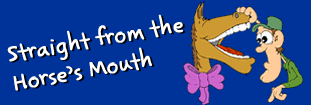Promoting Standards and Thinking Skills
The key to an effective curriculum is identifying the big ideas and addressing the essential questions students face as they mature as information scientists.
Use award-winning websites. Start with the webby winners. Ask students to identify the "big ideas" found in the website Make it Right.
As young people build skills, it's important to recognize that children mature at different speeds as they move through the grades. Spend time talking with peers about what's happening before they reach your classroom, as well as after they leave. Examine the standards of all grade levels to see where your activities fit into the big picture of the child's maturation.
For instance, examine the standards related to structure of nonfiction and compare each grade level:
- K.2.1 Locate the title and the name of the author of a book.
- 1.2.1 Identify the title, author, illustrator, and table of contents of a reading selection. (Core Standard)
- 2.2.1 Use titles, tables of contents, and chapter headings to identify central ideas or topics.
- 3.2.1 Use titles, tables of contents, chapter headings, a glossary, or an index to locate information in text.
- 4.2.1 Use the organization of informational text to strengthen comprehension.
- 5.2.1 Use the features of informational texts, such as formats, graphics, diagrams, illustrations, charts, maps, and organization, to find information and support understanding.
- 6.2.1 Identify the structural features of popular media (newspapers, magazines, online information) and use the features to obtain information.
- 7.2.1 Understand and analyze the differences in structure and purpose between various categories of informational materials (such as textbooks, newspapers, and instructional or technical manuals).
- 8.2.1 Compare and contrast the features and elements of consumer materials to gain meaning from documents.
Also, think of ways to differentiate instruction to meet the diverse needs and interests of children. Some of your children will be working at grade level while others may be below or above.
Provide tools such as Inspiration or Webspiration (the web-based version). These tools include templates that scaffold learning.
In this section, we'll explore a dozen nonfiction skills and associated standards.
- Identify Structure of Nonfiction
- Analyze Genre of Nonfiction
- Critique Nonfiction
- Generate and Address Questions
- Identify Main Idea
- Apply Prior Knowledge
- Identify Relationships and Make Comparisons
- Solve Problems and Draw Conclusions
- Make Predictions
- Use Sequence and Order
- Follow Instructions
- Find Meaning

